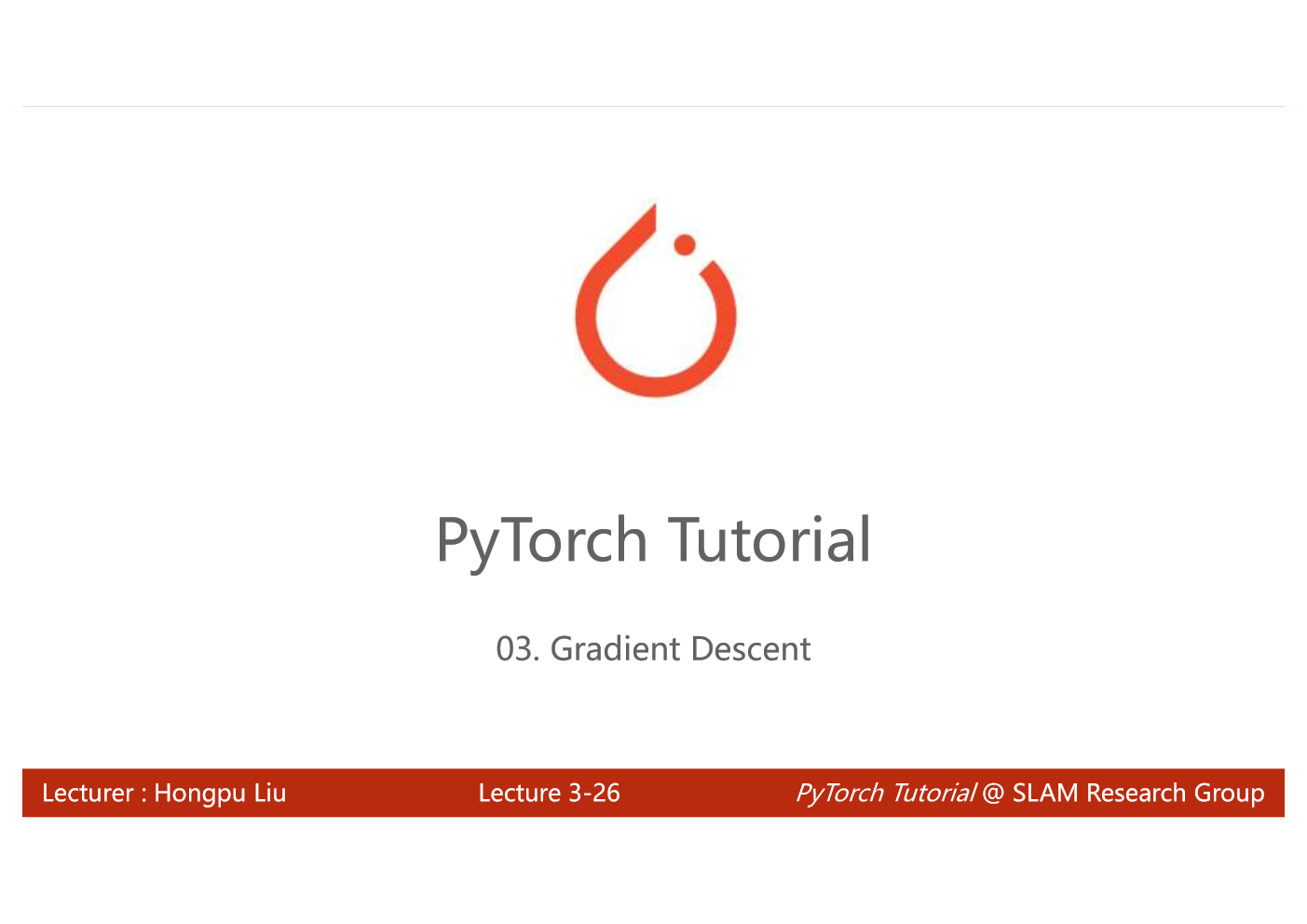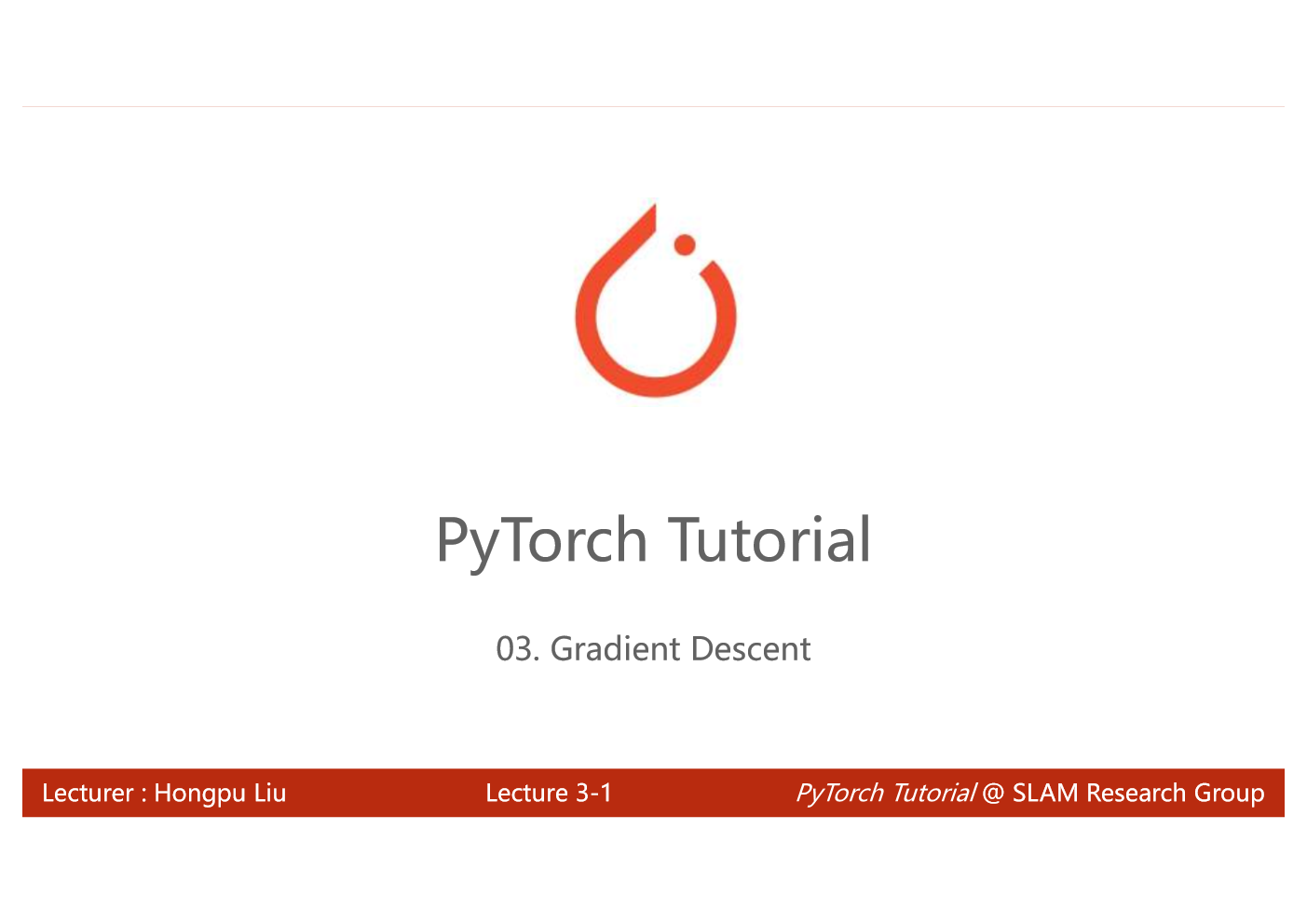


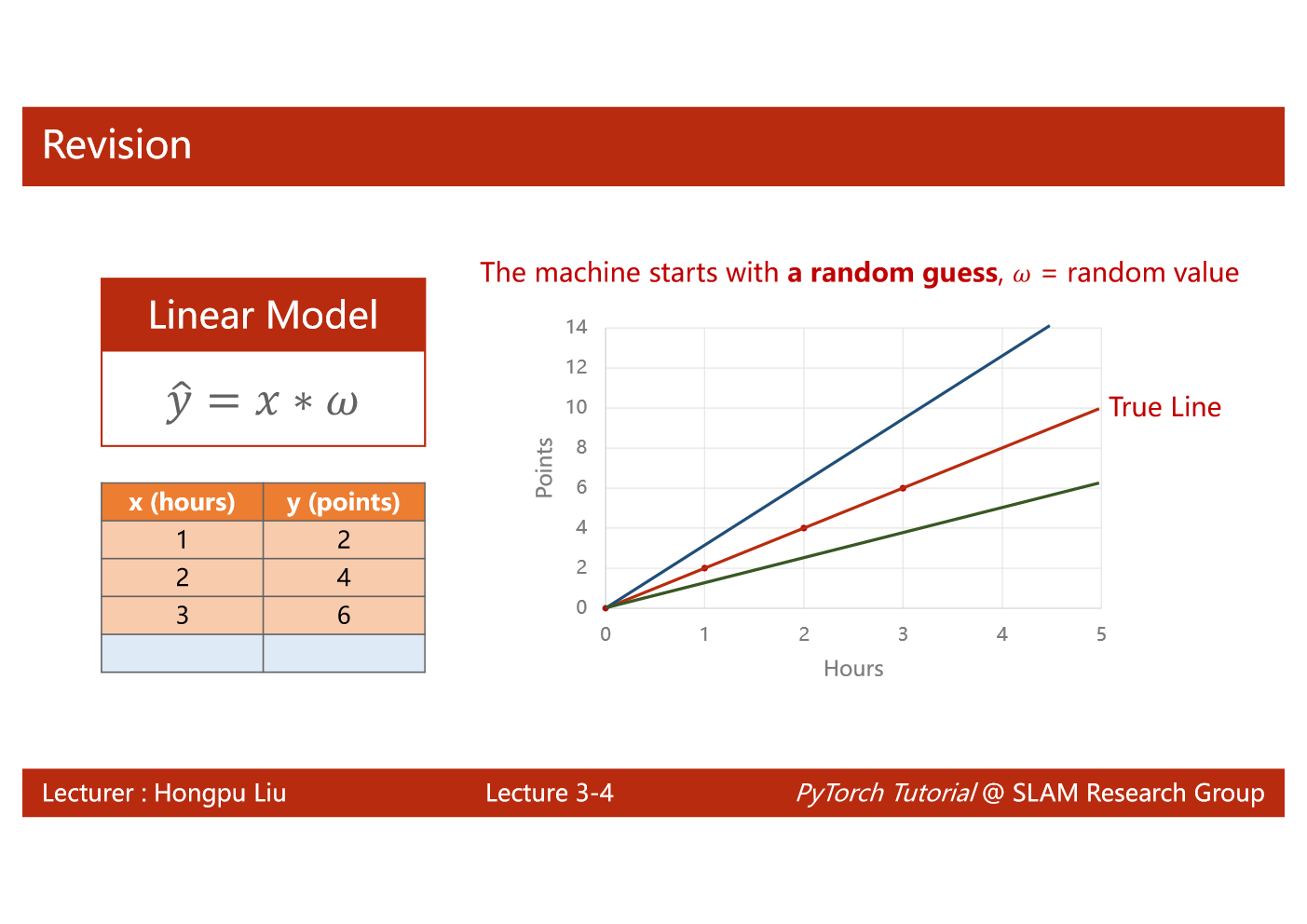

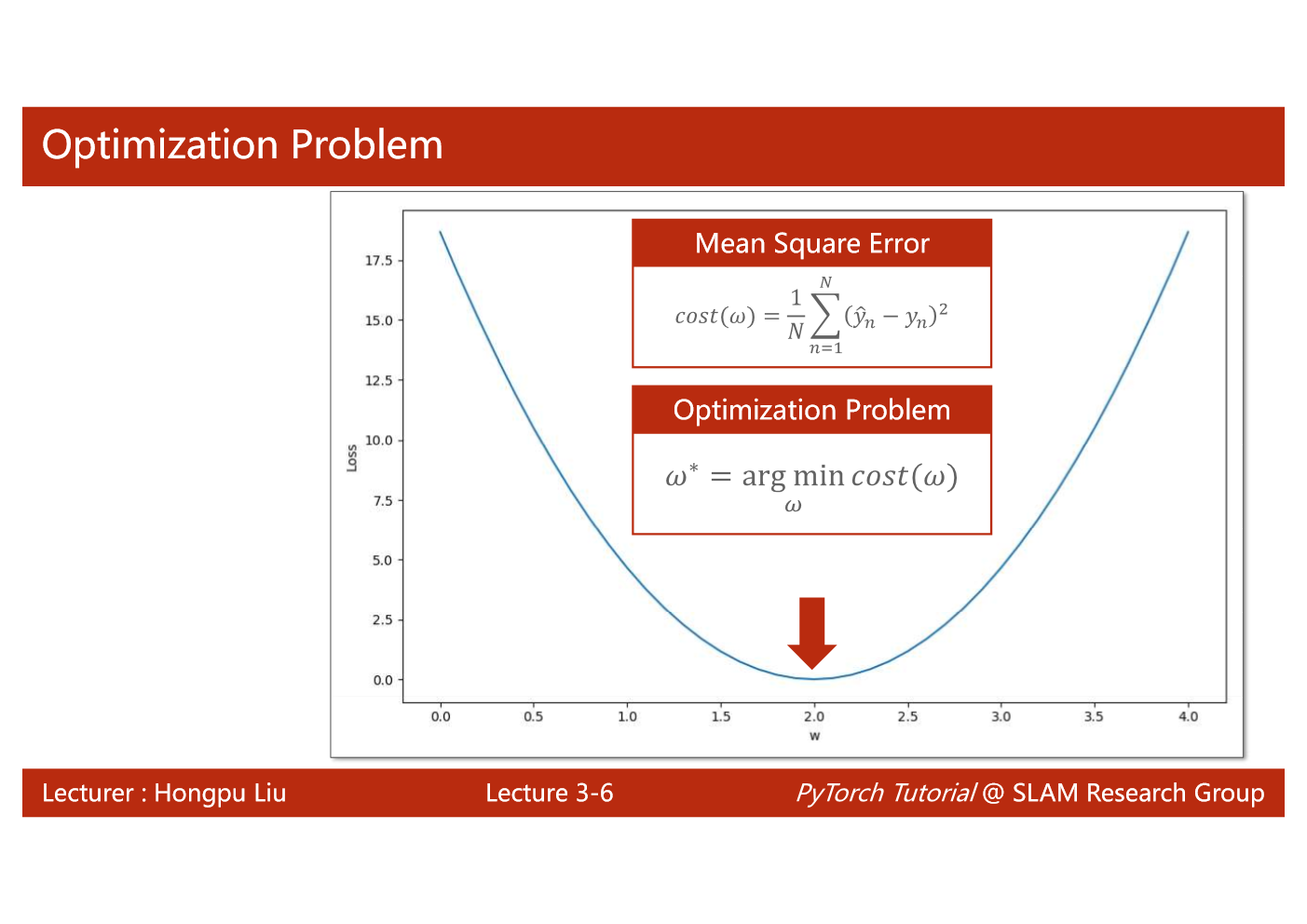

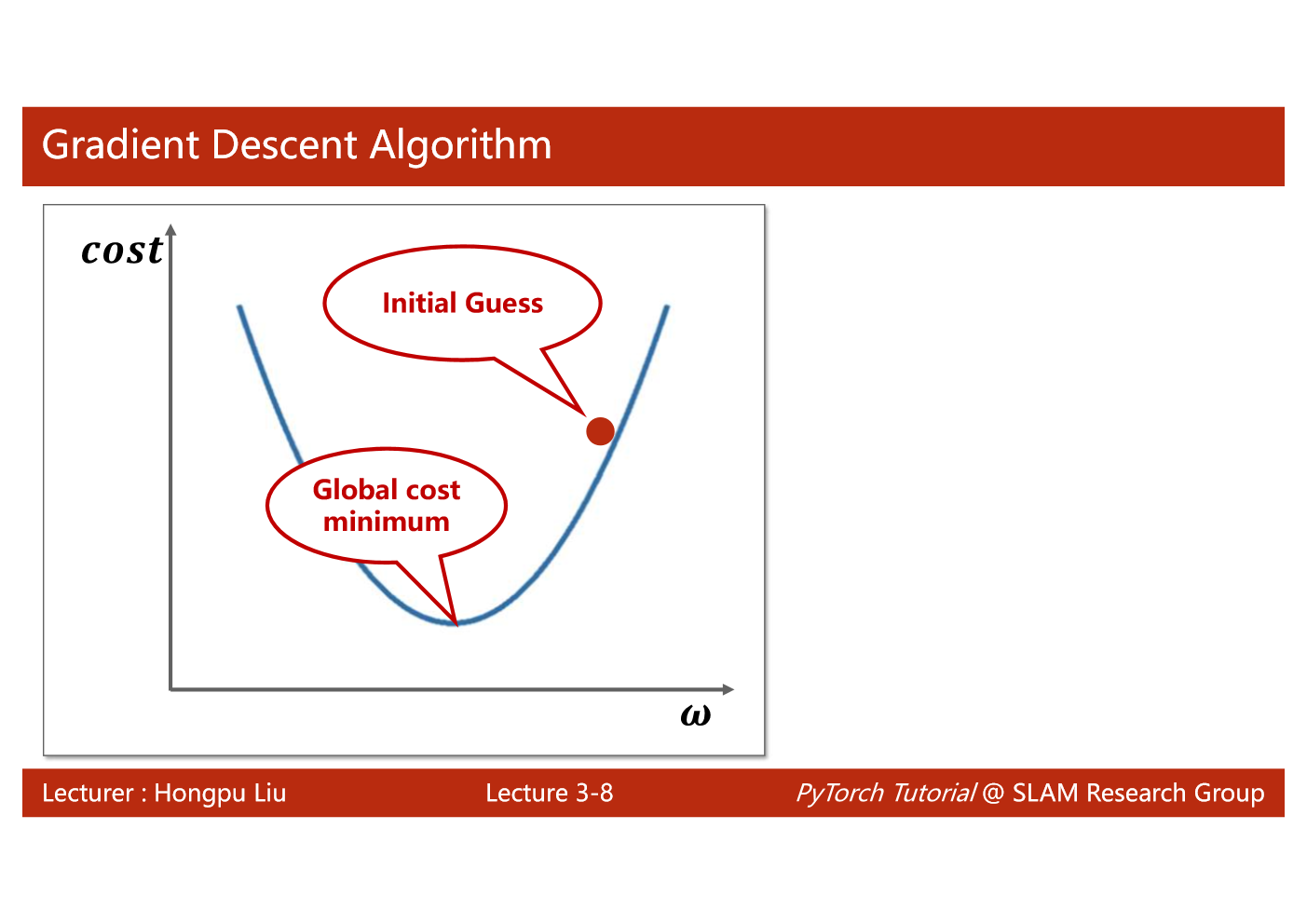
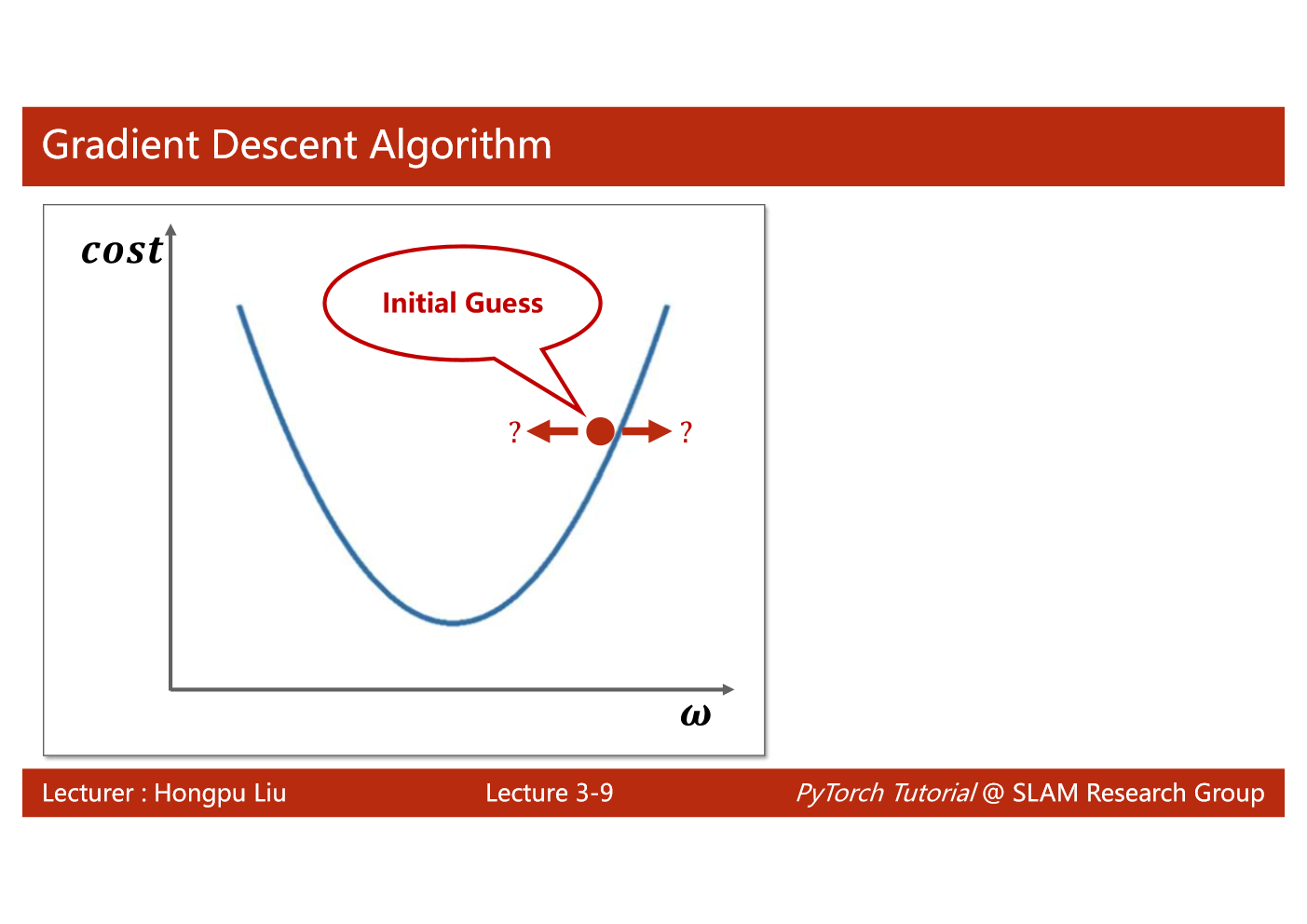
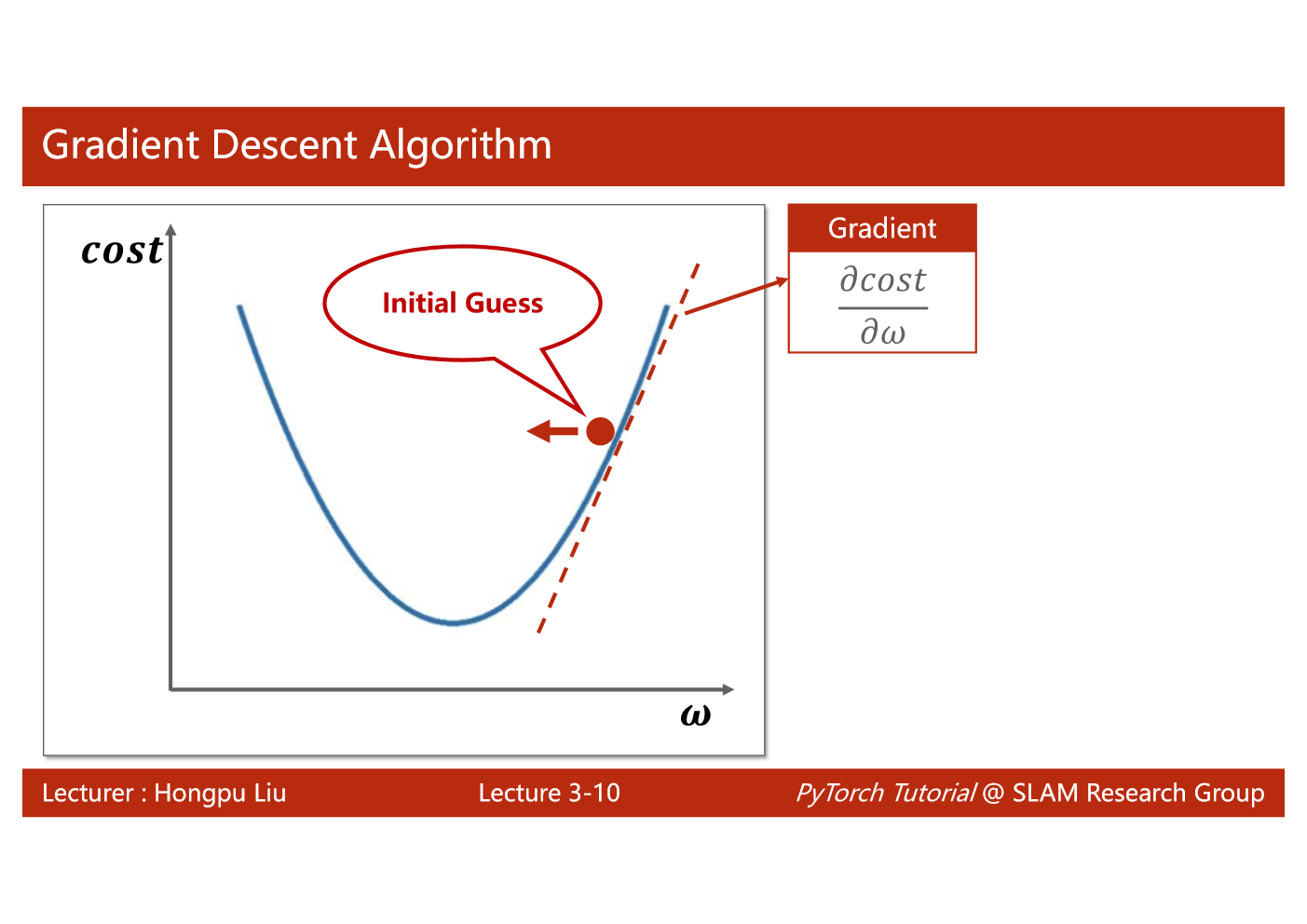
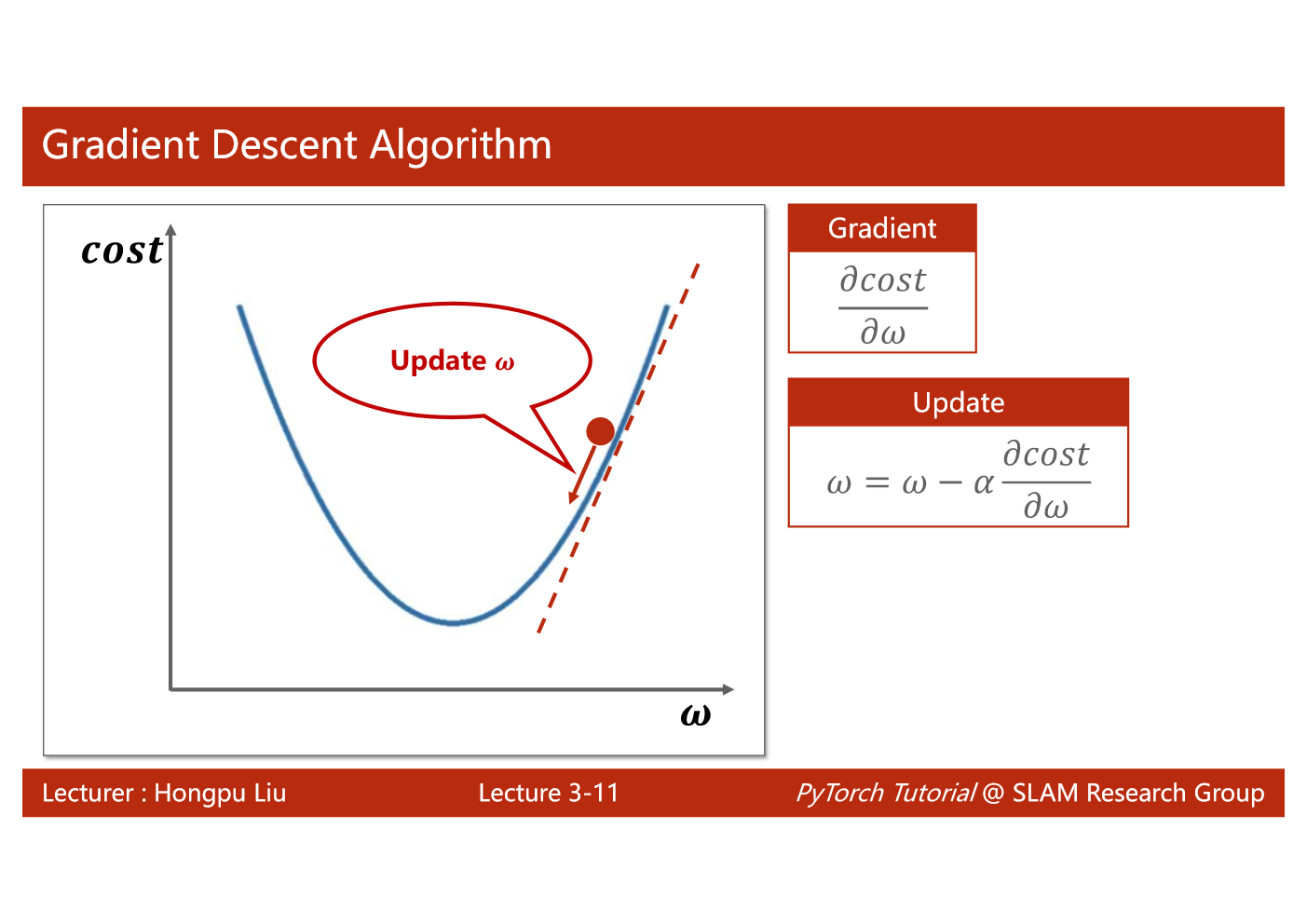
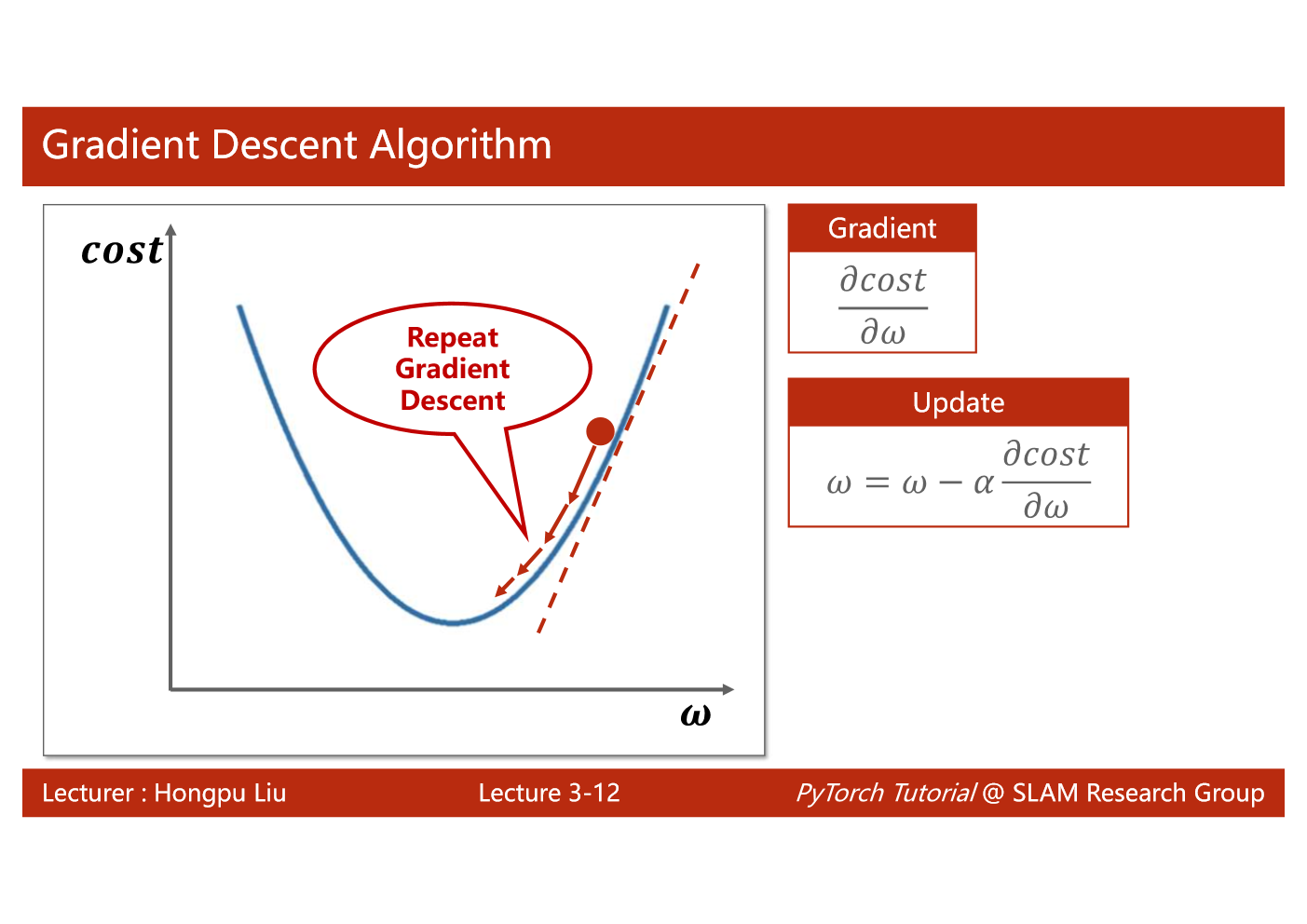
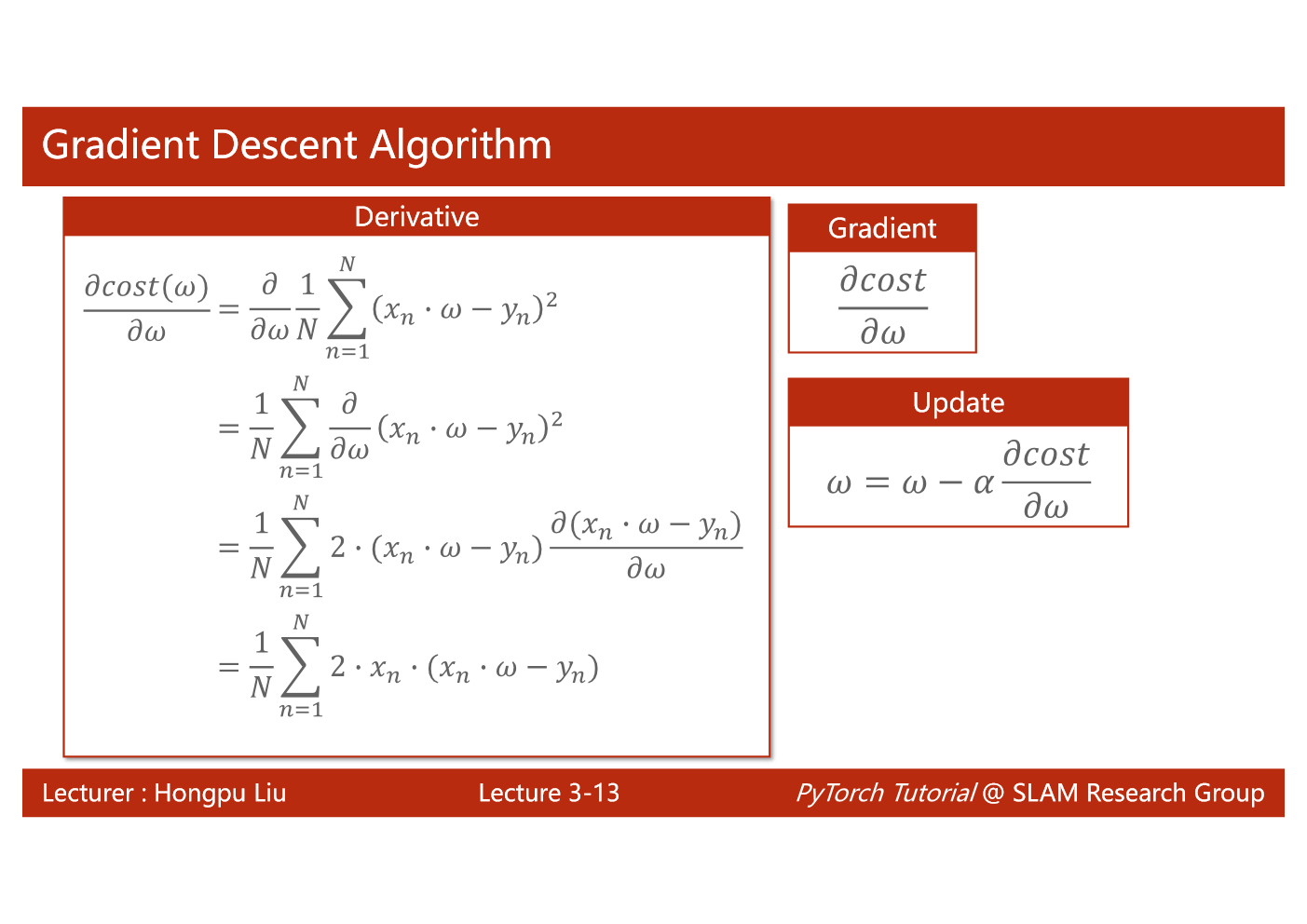
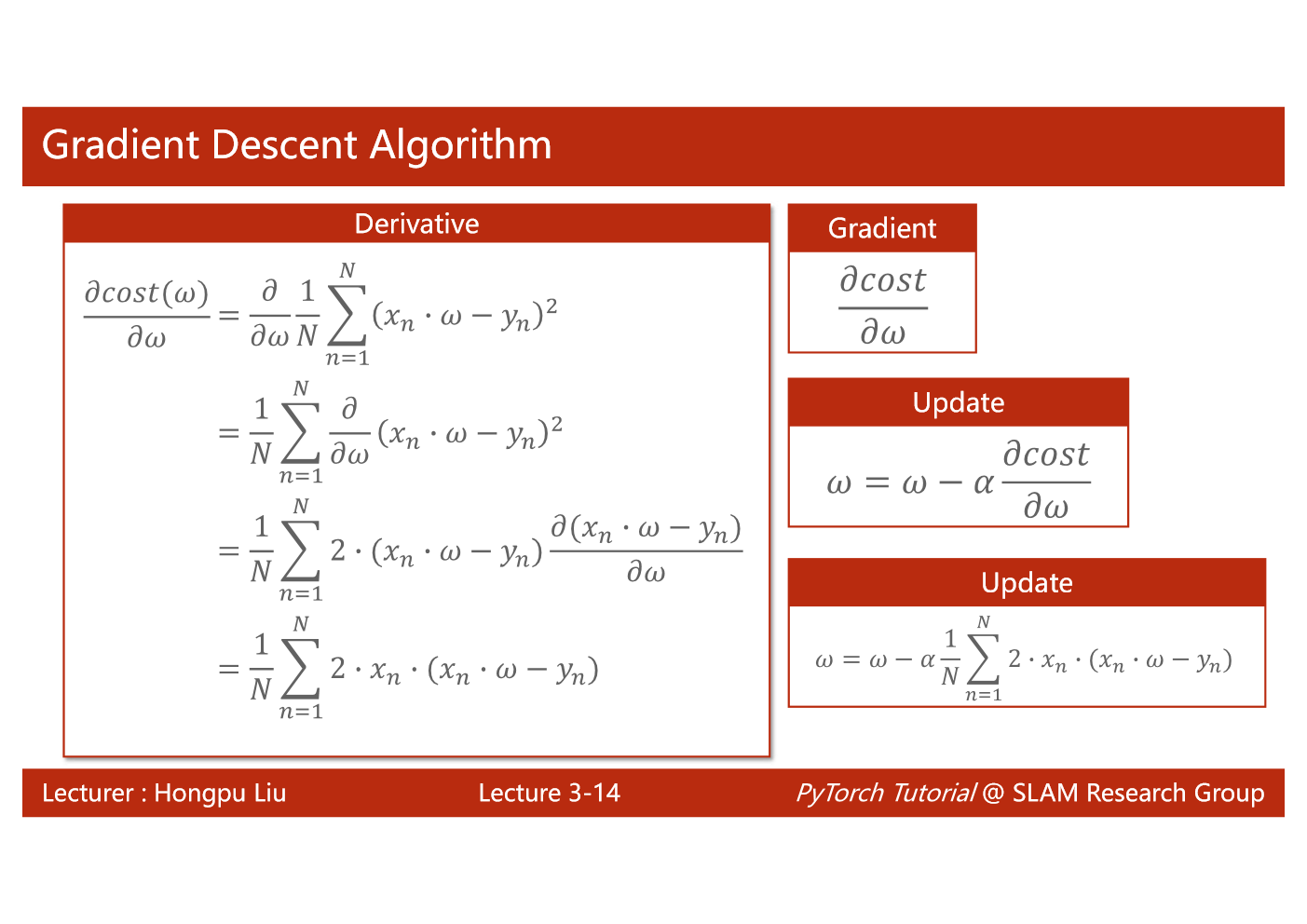
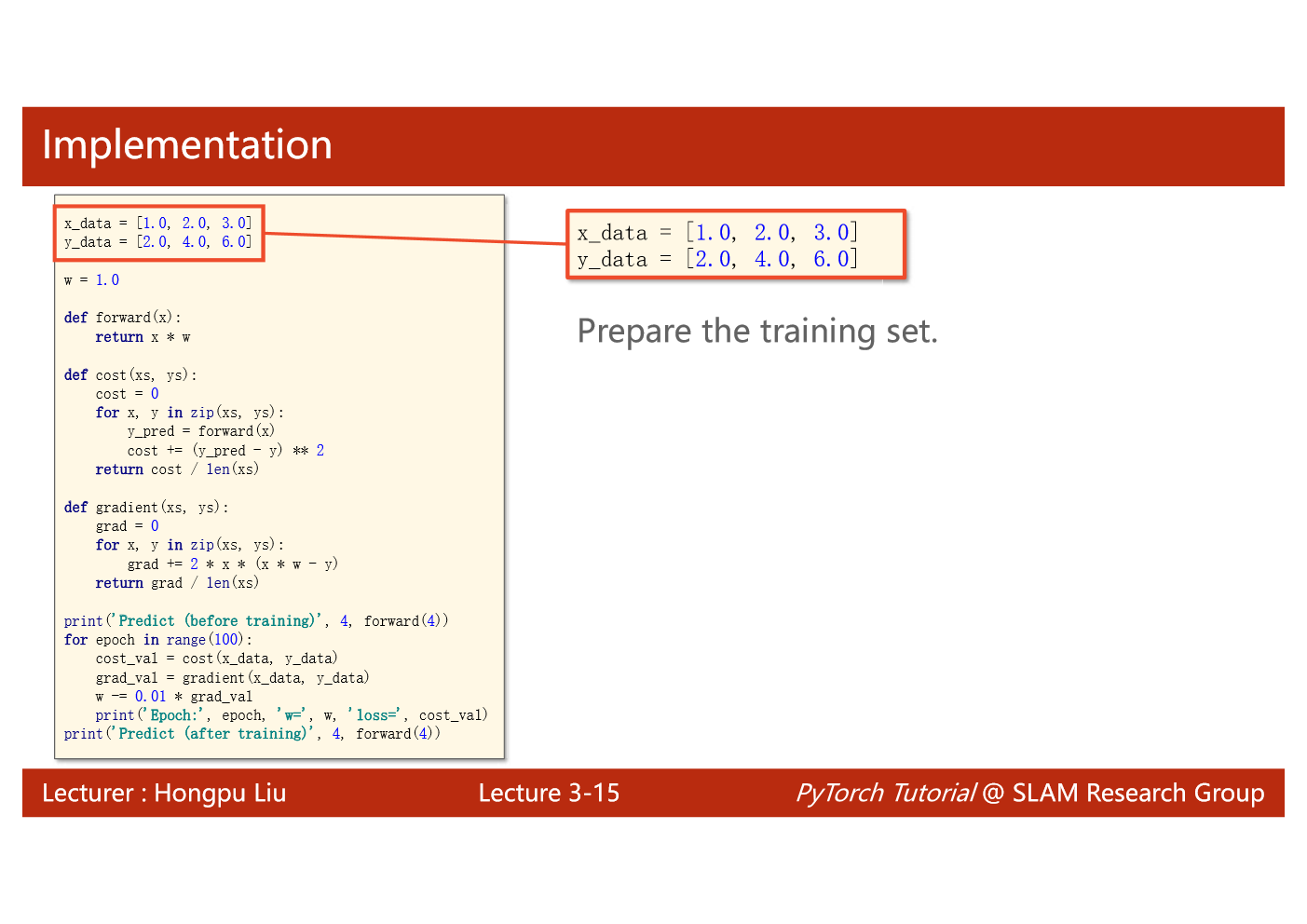
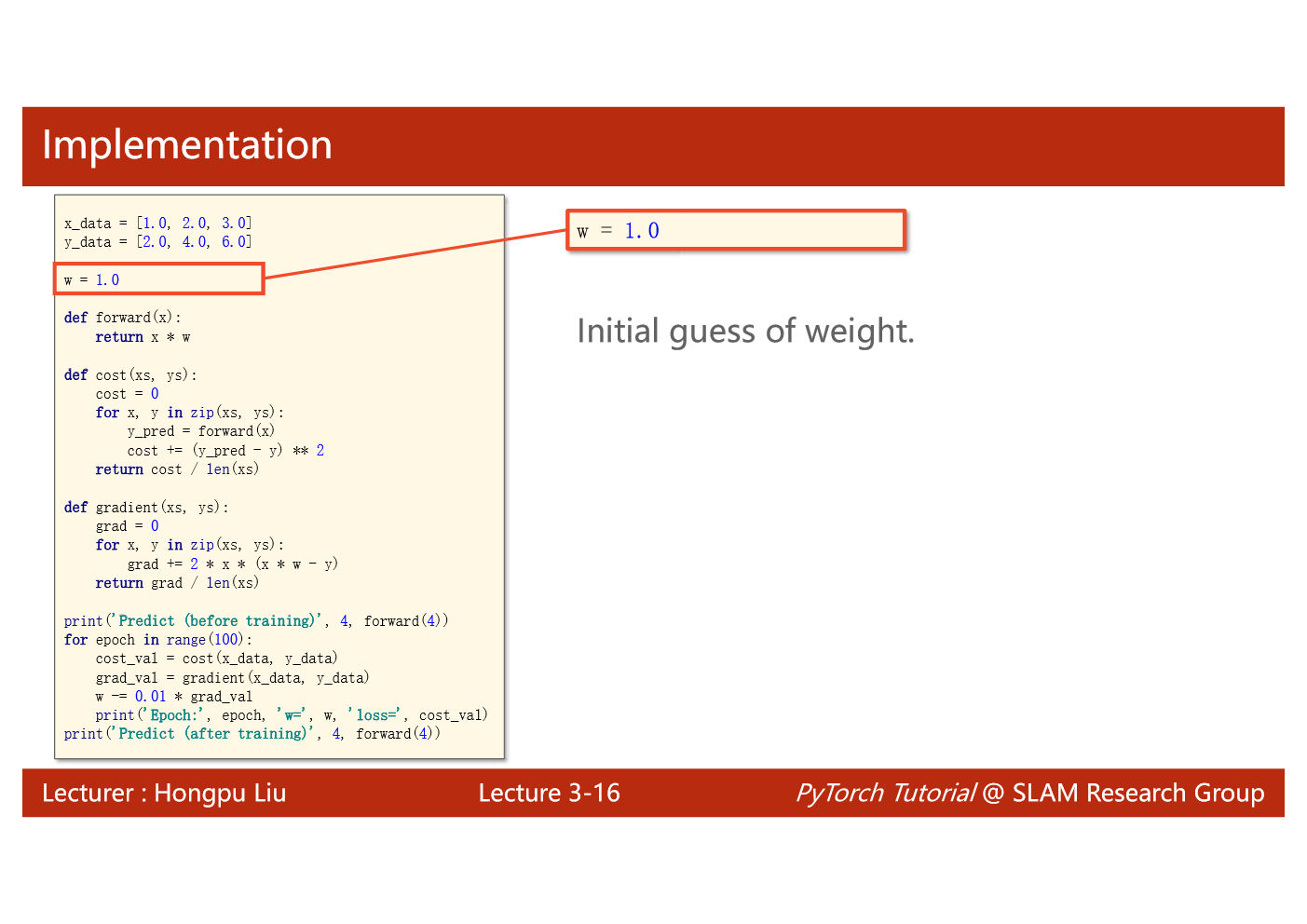
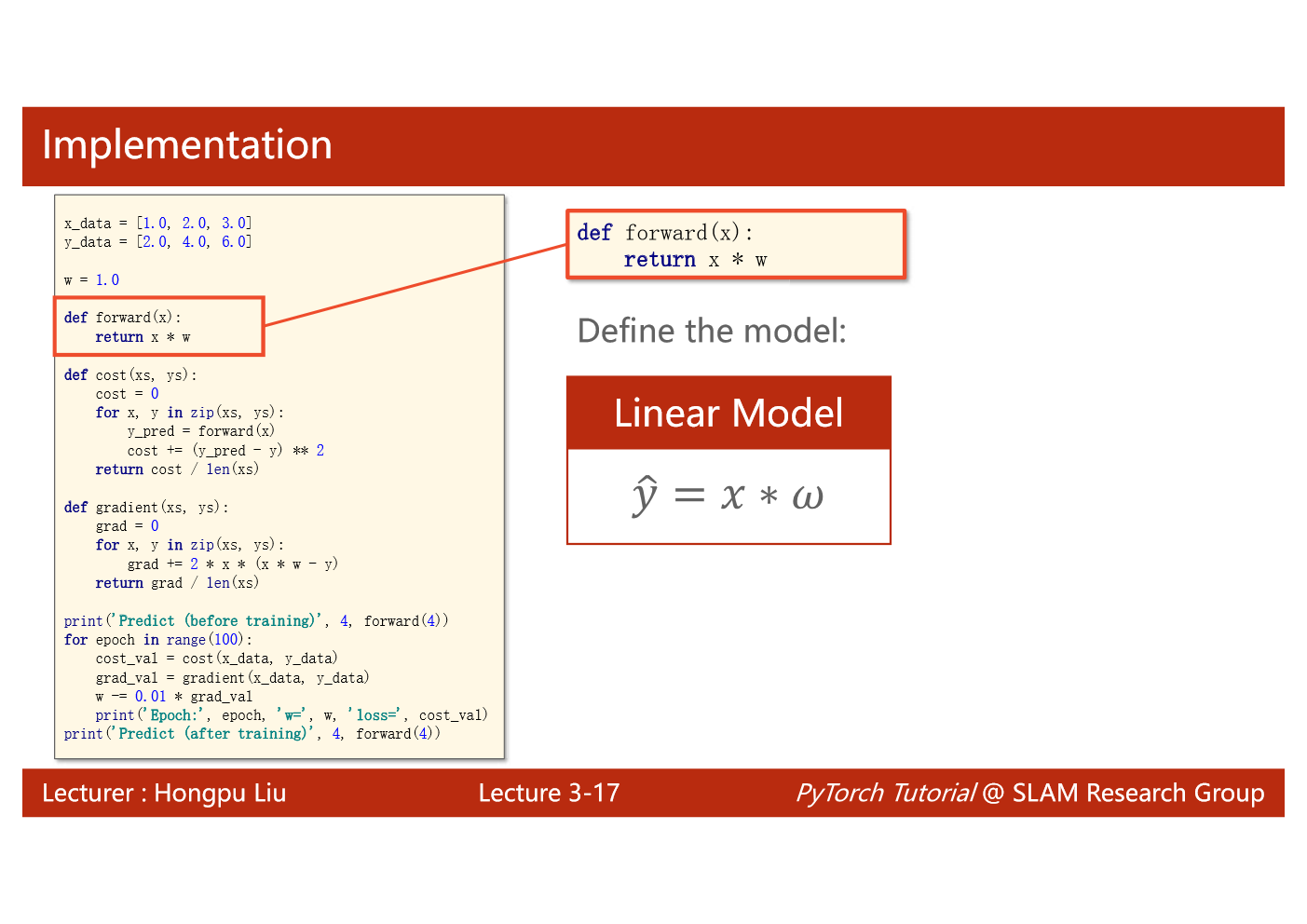
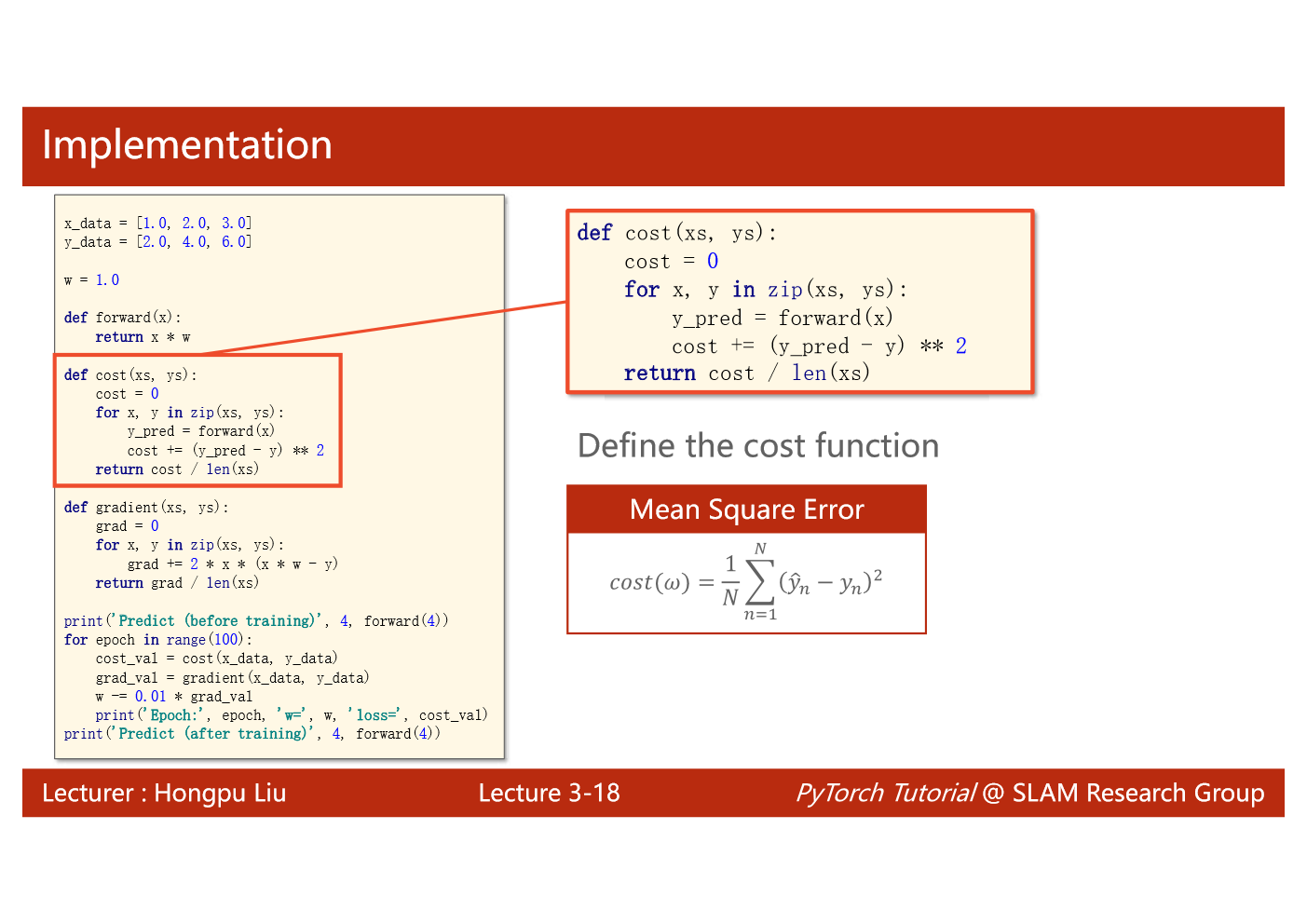
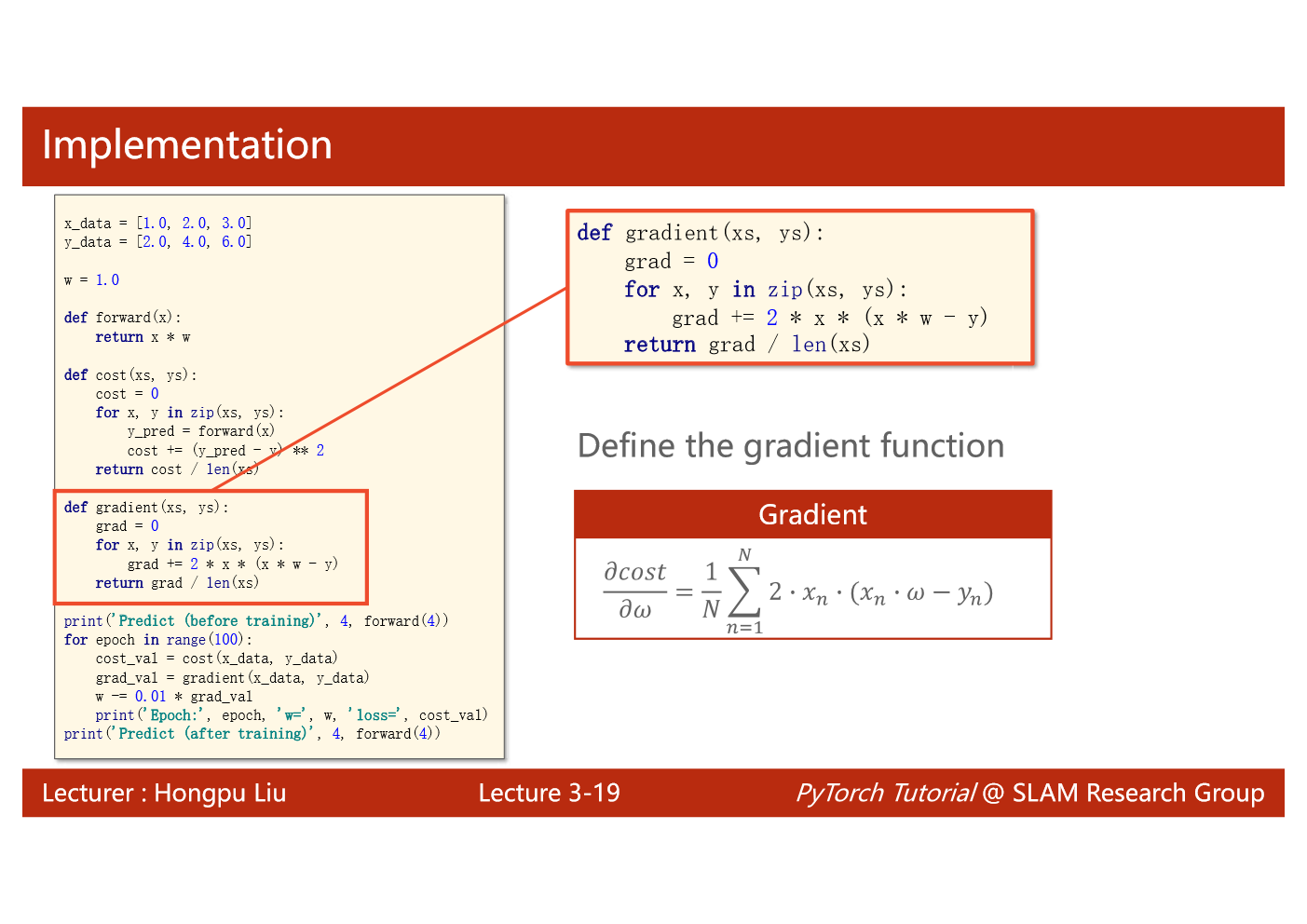
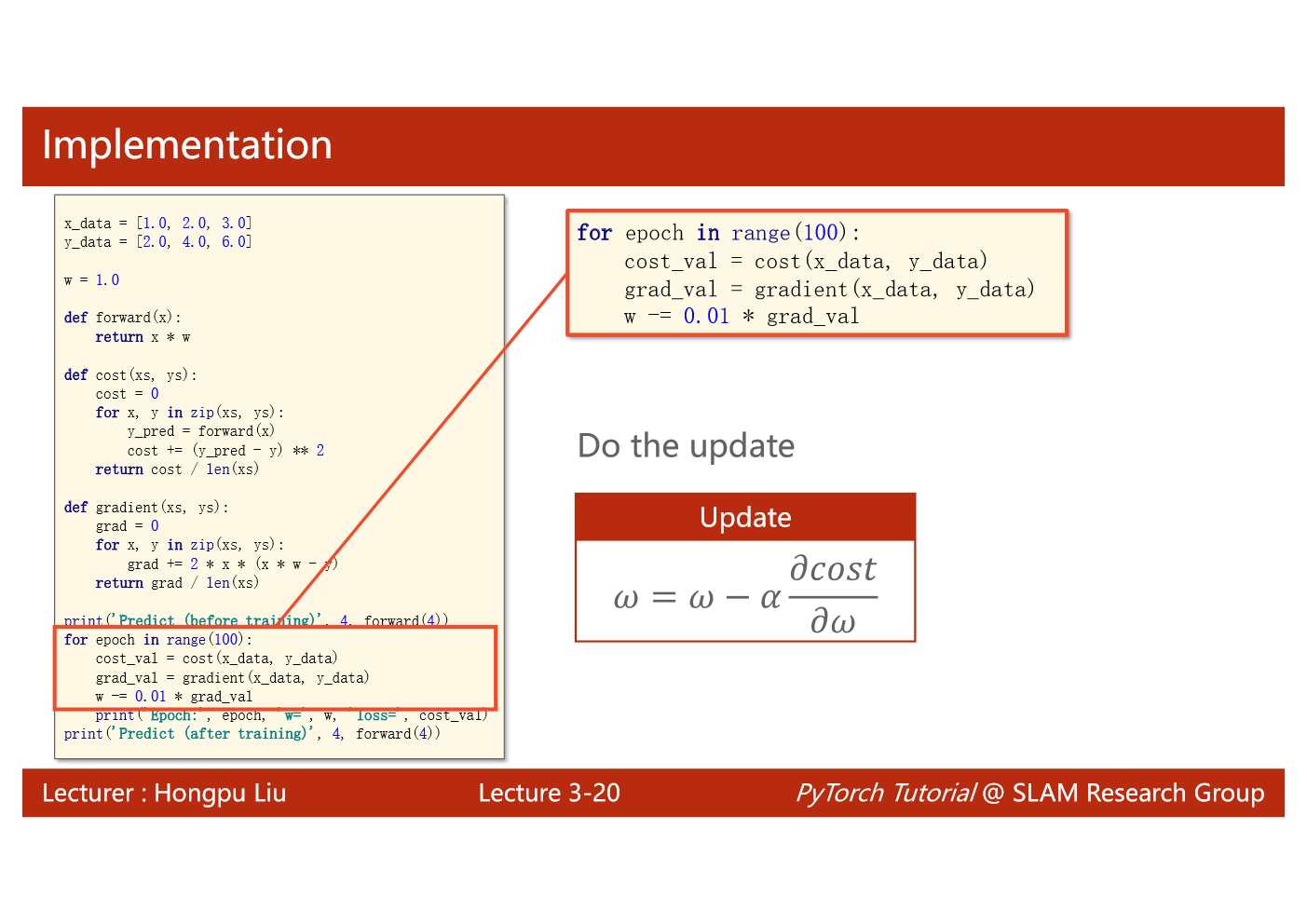
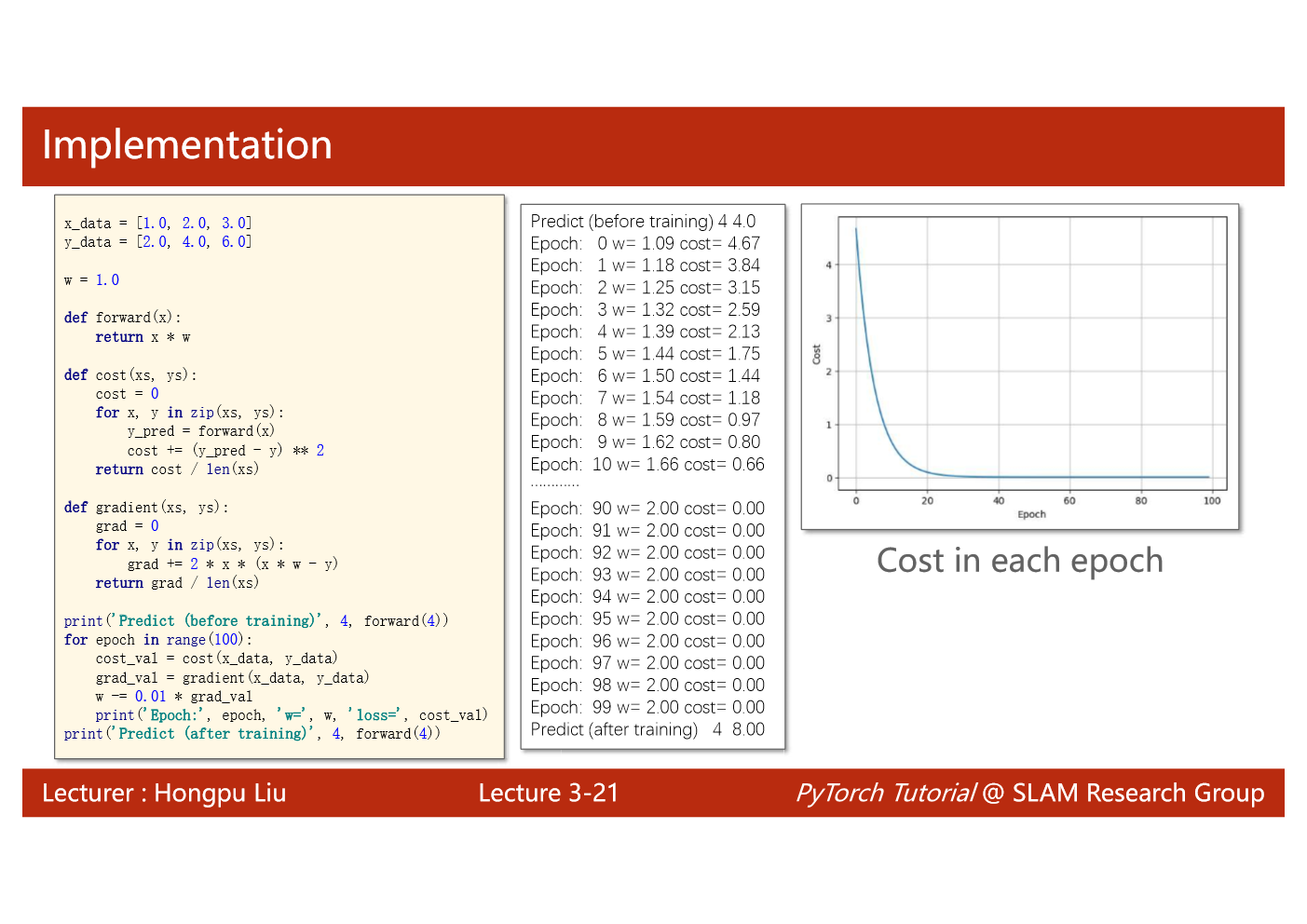
import matplotlib.pyplot as plt# prepare the training setx_data = [1.0, 2.0, 3.0]y_data = [2.0, 4.0, 6.0]# initial guess of weightw = 1.0# define the model linear model y = w*xdef forward(x):return x*w#define the cost function MSEdef cost(xs, ys):cost = 0for x, y in zip(xs,ys):y_pred = forward(x)cost += (y_pred - y)**2return cost / len(xs)# define the gradient function gddef gradient(xs,ys):grad = 0for x, y in zip(xs,ys):grad += 2*x*(x*w - y)return grad / len(xs)epoch_list = []cost_list = []print('predict (before training)', 4, forward(4))for epoch in range(100):cost_val = cost(x_data, y_data)grad_val = gradient(x_data, y_data)w-= 0.01 * grad_val # 0.01 learning rateprint('epoch:', epoch, 'w=', w, 'loss=', cost_val)epoch_list.append(epoch)cost_list.append(cost_val)print('predict (after training)', 4, forward(4))plt.plot(epoch_list,cost_list)plt.ylabel('cost')plt.xlabel('epoch')plt.show()
# Numpyimport numpy# For plottingimport matplotlib.pyplot as pltfrom matplotlib.pyplot import figuredef forward(w, x):return x * wdef cost(x_cor, y_cor, w):y_hat = forward(w, x_cor)loss = (y_hat - y_cor) ** 2return loss.sum() / len(x_cor)def gradient(x_cor, y_cor, w):grad = 2 * x_cor * (w * x_cor - y_cor)return grad.sum() / len(x_cor)x_data = numpy.array([1.0, 2.0, 3.0])y_data = numpy.array([2.0, 4.0, 6.0])num_epochs = 100lr = 0.01w_train = numpy.array([1.0])epoch_cor = []loss_cor = []for epoch in range(num_epochs):mse_loss = cost(x_data, y_data, w_train)loss_cor.append(mse_loss)w_train -= lr * gradient(x_data, y_data, w_train)epoch_cor.append(epoch + 1)plt.figure()plt.plot(epoch_cor, loss_cor, c='b')plt.xlabel('Epoch')plt.ylabel('Cost')plt.show()
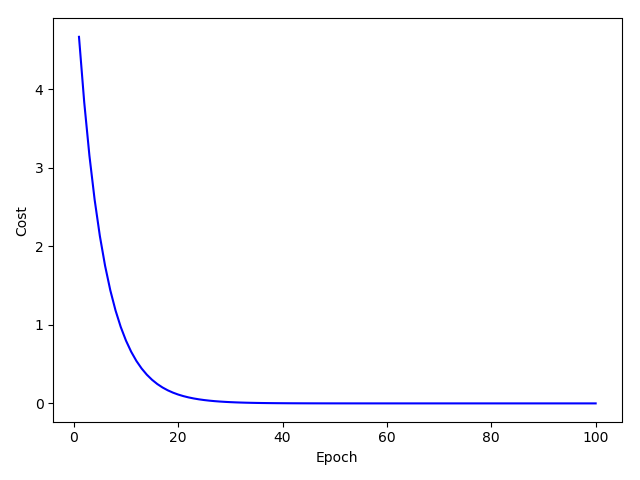

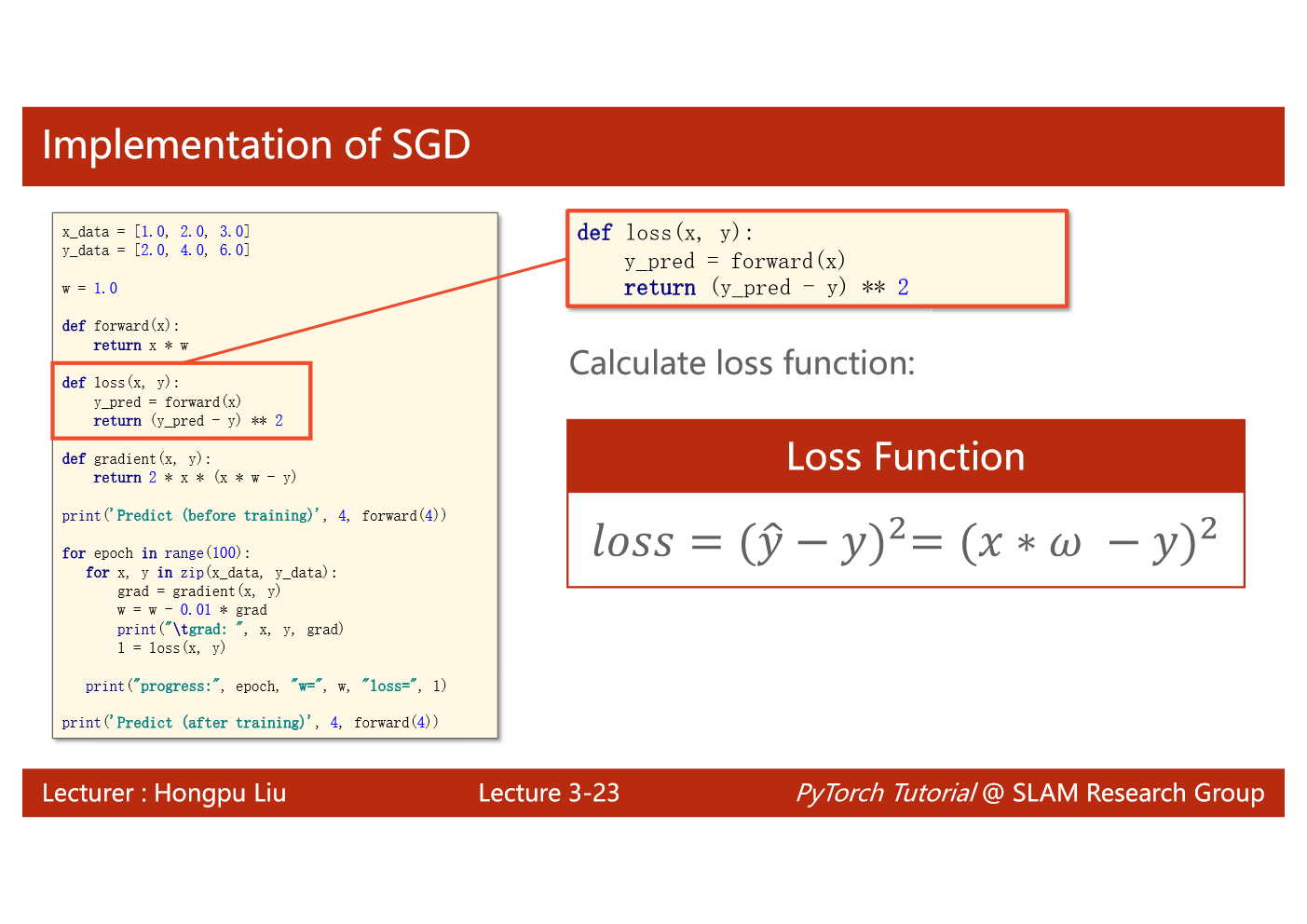
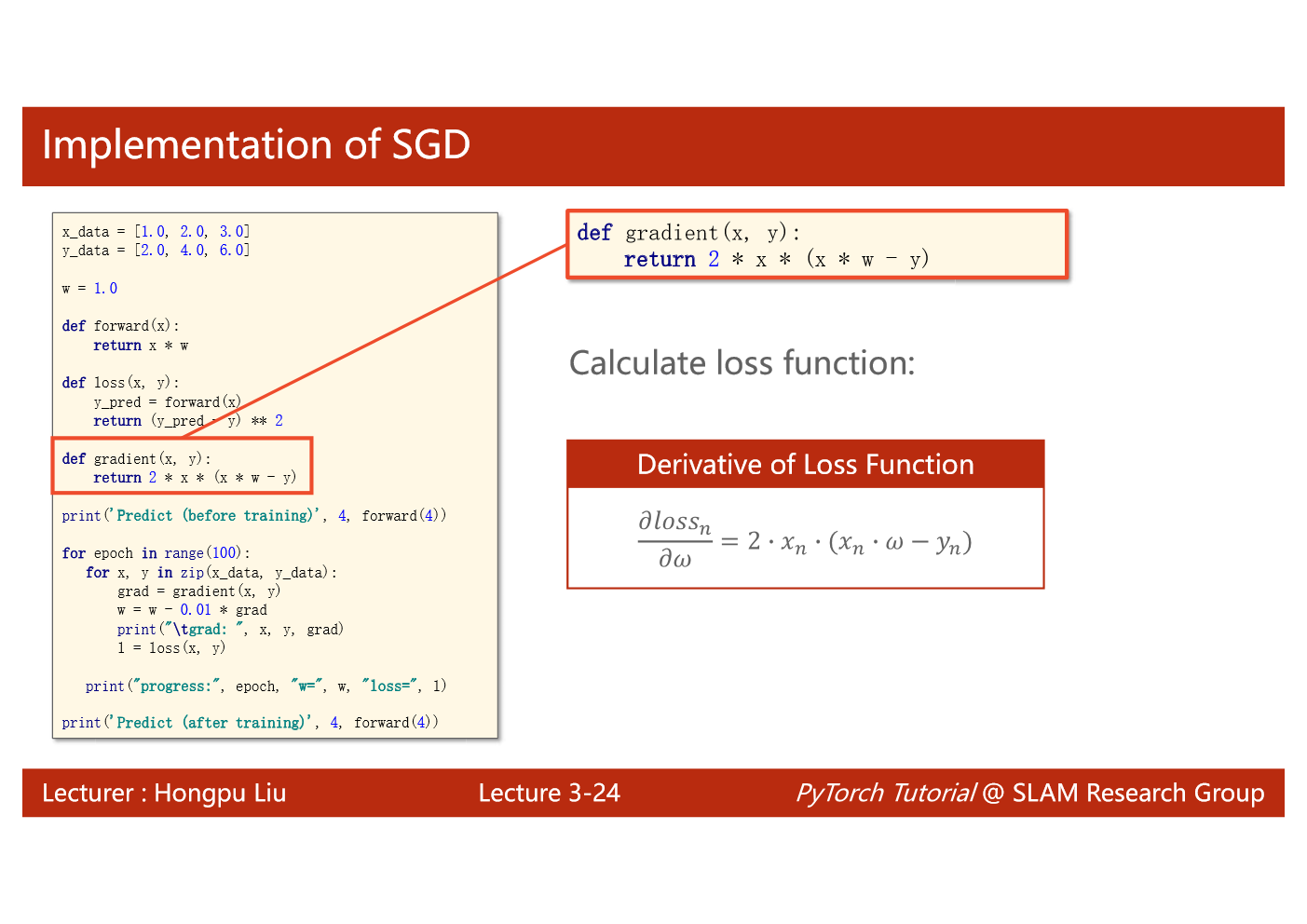
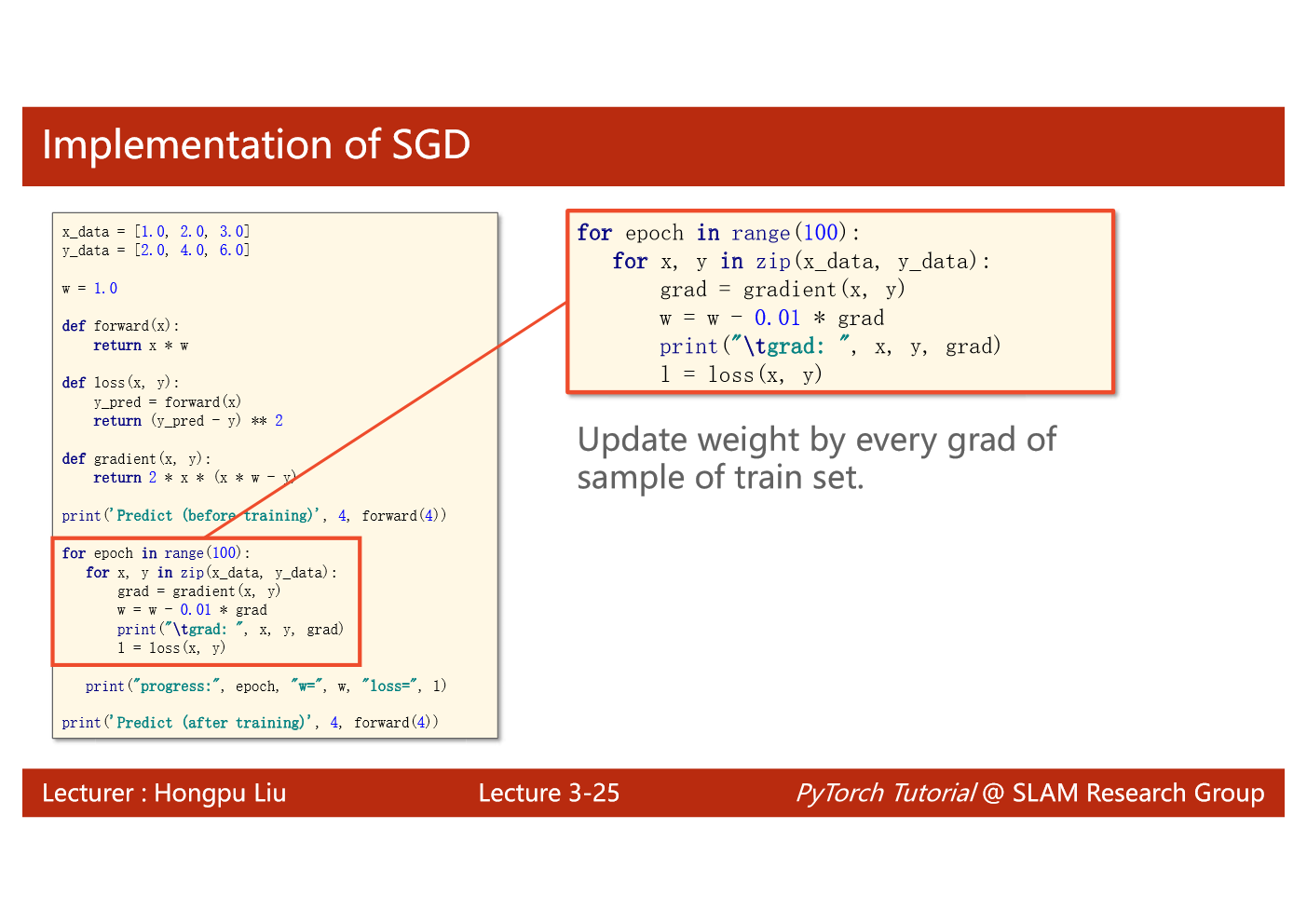
import matplotlib.pyplot as pltx_data = [1.0, 2.0, 3.0]y_data = [2.0, 4.0, 6.0]w = 1.0def forward(x):return x*w# calculate loss functiondef loss(x, y):y_pred = forward(x)return (y_pred - y)**2# define the gradient function sgddef gradient(x, y):return 2*x*(x*w - y)epoch_list = []loss_list = []print('predict (before training)', 4, forward(4))for epoch in range(100):for x,y in zip(x_data, y_data):grad = gradient(x,y)w = w - 0.01*grad # update weight by every grad of sample of training setprint("\tgrad:", x, y,grad)l = loss(x,y)print("progress:",epoch,"w=",w,"loss=",l)epoch_list.append(epoch)loss_list.append(l)print('predict (after training)', 4, forward(4))plt.plot(epoch_list,loss_list)plt.ylabel('loss')plt.xlabel('epoch')plt.show()
随机梯度下降法在神经网络中被证明是有效的。效率较低(时间复杂度较高),学习性能较好。
随机梯度下降法和梯度下降法的主要区别在于:
1、损失函数由cost()更改为loss()。cost是计算所有训练数据的损失,loss是计算一个训练函数的损失。对应于源代码则是少了两个for循环。
2、梯度函数gradient()由计算所有训练数据的梯度更改为计算一个训练数据的梯度。
3、本算法中的随机梯度主要是指,每次拿一个训练数据来训练,然后更新梯度参数。本算法中梯度总共更新100(epoch)x3 = 300次。梯度下降法中梯度总共更新100(epoch)次。
综合梯度下降和随机梯度下降算法,折中:batch(mini-patch)